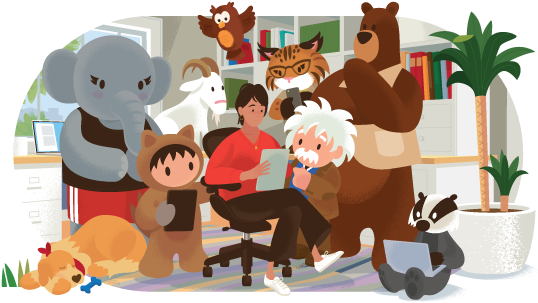If you missed DreamTX 2020 we’ve got good news – all of the sessions are now available on demand. And even though this year’s virtual event was a bit different than our past get-togethers, there was still plenty to get excited about, as thought leaders, Trailblazers and keen business minds from around the globe shared tips and insights for succeeding in the New Normal.
One of the top challenges now facing businesses – and perhaps one of the most under-addressed – is how to best empower workforces for life in a changed world. The future of work is an amorphous thing, and as we head further into an always-on landscape where AI is rising, hierarchies are crumbling and values are changing, businesses are racing to build agility and resilience.
Let’s have a look at some of the key takeaways from the Dreamforce 2020 session, Empowering Employees for the Future of Work, to see what we can learn.
5 tips for preparing the workforce for an in-flux future
1) Shift from apathy to action:
Today’s workforces want their work to be meaningful, and 90% say they are willing to earn less money to do more meaningful work. “Neutrality is increasingly not an option: leaders need to take a stand,” states Katherine von Jan, Chief Strategy Officer, Office of Innovation, Salesforce. “Today’s workers are fearless activists. They want to work for companies that are ethical, equitable and sustainable – it’s core to how they do business.”
2) Encourage machine/human collaboration:
According to Accenture Future Workforce, 46% of employers say that job descriptions are obsolete. Japan’s Robot Café employs remote workers to control robots at their workplace, while Ginger.io uses AI to triage mental health conditions. This kind of human/machine collaboration is becoming more commonplace and will continue to grow in the Next Normal and beyond.
3) Move from always-on to find-the-flow:
Prepare the workplace for a shift from performance-on-demand to kinder, frictionless work. As Warren Buffet said, “Busy is the new stupid.” From meditation apps to servers that have been configured to only allow intra-office emails during business hours, today’s companies are giving their employees the headspace they need to perform at their best.
4) Rethink hierarchical structures and rules to cultivate agency:
From microenterprises where employees are ‘supported entrepreneurs’ to companies reorganising their payment processes to support struggling employees by paying by the shift, many organisations are moving from bureaucracy to humanocracy. In fact, according to a Mercer Global Talent Trends report, 93% of companies have near-future plans to become flatter.
5) Focus on skills not credentials:
Traditional degrees are becoming less important as businesses shift their focus to skills, fluidity and long-term potential for growth. With companies always on the lookout for ‘teachable moments’, as well as turning their attention towards reskilling and upskilling platforms, it’s becoming easier and easier to justify hiring the right person rather than the most qualified one. This focus on skilling up employees also leads to better, more meaningful relationships, as 94% of respondents to a LinkedIn 2019 Workforce Report said they would stay with a company longer if it invested in helping them learn.
How are you preparing for the future of work?
A future filled with machines that empower humans rather than replace them – and where meaningful and ethical work takes precedent over monotonous labour – sounds pretty bright indeed. That’s not to say there won’t be challenges, though, and businesses will need to prepare their workforce for an evolving landscape.
To see how to do so, as well as to see what questions Salesforce Executive Director Ann Quach thinks businesses should be asking themselves, check out the on-demand session, Empowering Employees for the Future of Work.







